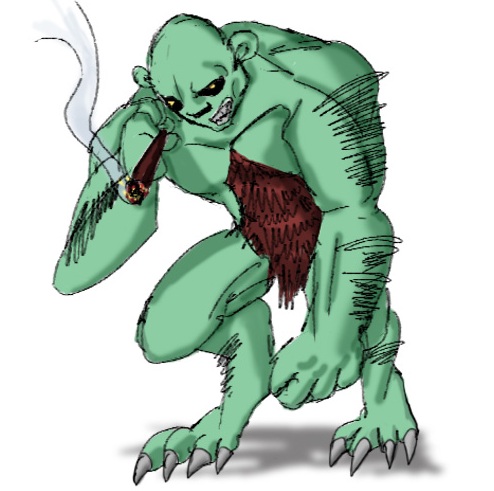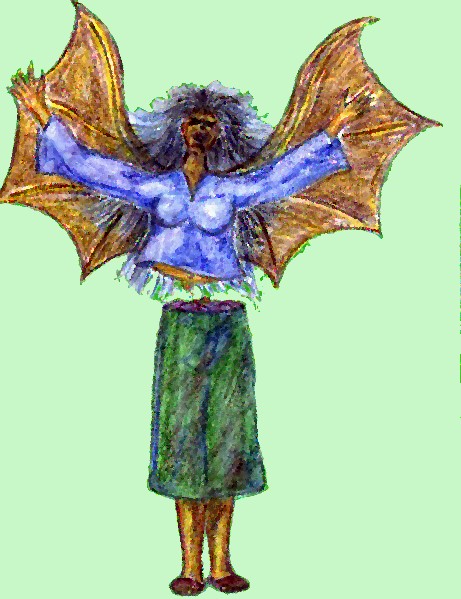|
HalfMooner
Dingaling

Philippines
15831 Posts |
 Posted - 04/11/2011 : 04:25:04 Posted - 04/11/2011 : 04:25:04



|
The Philippine Islands
The Philippine archipelago is made up of approximately 7,000 islands, stretching 1,800 kilometers from just south of Taiwan to just north of Borneo. The Republic of the Philippines is perhaps the most monster-dense nation on earth, accounting for well over one half of all monster species known to science. Yet many of the monster species in the Philippines are still nondescript, with new species being discovered and described almost weekly.
Though Philippine monsters are still poorly studied, there are known to be more than 750 endemic monster species, many of which exist nowhere else on earth. In addition, another 100-200 migratory species of monsters spend at least part of each year in these tropical islands. Another 150 or so species are invasive, or have been introduced.
The monsters
The thousand or more monster species in the Philippines, unlike the more mundane species of flora and fauna, do not suffer endangerment or extinction due to human population pressures. Indeed, the more the population of the Philippines has risen, the more widely monsters have been reported. Philippine monsters seem to thrive where humans are most dense.
How a monster-watcher should behave in the field
In general, when looking for any kind of monster of in the field, the first thing to bear in mind is that the monster is probably looking for you, too. Remember also that the senses of most monsters are far more acute than those of mere humans, so they more likely than not will find you before you find them. When they find you, their superior speed, teeth, claws, stings, agility, physical strength and magical abilities are almost certain to put you completely at their (very unlikely) mercy.
The best field behavior for monster-watchers is to stay as far away as possible from known monster habitats. Put a large ocean or two between yourself and such creatures, and study them safely by simply reading this Field Guide.
But not all Philippine monsters are dangerous. Some are merely disgusting or ridiculous.
Descriptions of monster species
1. Monsters not physically dangerous to humans
As stated above, not all Philippine monsters are dangerous. But even those who are not a threat to human life can be pretty damned spooky or repulsive. Here are some examples:
Kapre

A Kapre and his stogie
The Kapre is a sort of Ogre or Troll. It is a huge, humanoid being who sits in a big balete tree and smokes an enormous cigar. Its sole purpose in life is to frighten people. Considering its cigar-smoking behavior and its resemblance to the Troll, the Kapre is probably an introduced species, perhaps originating in Europe or Central America. It is common practice for some of the bolder Filipino children to approach a Kapre tree and taunt the creature, with chants such as "You don't scare us!" and "Cigar smoking is bad for your health!" Such taunts make the Kapres very angry, but they have never been known do anything about it. (Or if they have, no witnesses survived to tell the tale.)
Duwende
Think of Duwendes as the local race of Filipino Leprechauns. A White Duwende will bring good luck, while a Black Duwende will bring bad luck. (Some scientists assert that this is a racist stereotype, and that either type of Duwende is likely to dispense either good or ill-fortune arbitrarily.) Both subspecies collect hoards of gold, which they can sometimes be coerced to give to humans. Obviously these are two races evolved from an invasive species from Ireland.
Sarimanok
Magical birds are the Sarimanoks, which will bestow good fortune upon anyone who catches one. One certainly did so for Malakas and Maganda (the Philippine Adam and Eve), whom it gave birth to by freeing the couple from a giant bamboo tree. Unfortunately, nobody's seen, never mind captured, a Sarimanok since the time of Malakas and Maganda.
Pugot
A self-decapitated giant with shape-shifting abilities, the Pugot haunts dark places and rampages at night across the landscape. It gruesomely feeds by cramming food down its neck-hole. But the Pugot doesn't actually harm people. The Pugot's worst offense against humanity is its practice of stealing women's underwear from laundry lines. Seriously.
Bungisngis
Bungisngis is a giant humanoid Cyclops who is always giggling. He is not photogenic. Bungisngis has huge tusks, and his teeth always show prominently. When Bungisngis lifts his upper lip, it covers his whole upper face. Unlike Homer's Cyclops, Polyphemus, Bungisngis doesn't seem to hate, or to hunger for the flesh of, human beings. But, like Polyphemus, Bungisngis can be easily tricked by a macaque monkey, or even by a brawny Greek hero. Clearly another invasive species.
2. Dangerous monsters
Dangerous monsters in the Philippines need to be placed in proper perspective. They are hardly the most dangerous things in this island nation. The actual most dangerous things here are:
1. The Dengue fever-carrying Aedes aegypti mosquito
2. Natural disasters (earthquakes, floods, typhoons, volcanoes, mudslides, tsunamis, etc.)
3. Karaoke
4. Foreign expatriates
5. Filipinos
6. Venomous snakes
Monsters would be about number ten on that list. Here are a few of the more dangerous Philippine monsters:
Nuno sa punso
The "Old Man of the Mound" is invisible, and sits upon termite or ant mounds. If a person bumps into such a mound when a Nuno sa Punso is sitting there, bad things happen. A man's testicles might swell to enormous size, boils might erupt all over one's body, or if lucky, one's knees might merely ache.
Aswang
The Aswang is the Philippine Vampire. Just ordinary, everyday Vampires, the same as are found commonly throughout the world. Vampires have been widely distributed for thousands of years, and it has been so far impossible to determine their place of origin.
Manananggal

Manananggal, the "Segmentor"
A Manananggal is a creature that looks like a woman with bat wings. It is a local example of convergent evolution, occupying a somewhat similar niche to that of the common Vampire. It is an entirely parthenogenic monster. The Manananggal separates its upper body from its lower torso and goes flapping around in the night. When it finds a pregnant woman, it pierces her belly with its long, sharp tongue and sucks out the blood of the fetus. The Manananggal must return to its lower body before sunup, or perish. If a human finds a Manananggal's lower body standing in wait for the reattachment, salt or ashes can be applied to its gory waist. This will seal the wound, making it impossible for the Manananggal to reattach itself.
(To be continued. Honest.)
|
“Biology is just physics that has begun to smell bad.” —HalfMooner
Here's a link to Moonscape News, and one to its Archive. |
Edited by - HalfMooner on 04/11/2011 05:36:35
|
|
![]()